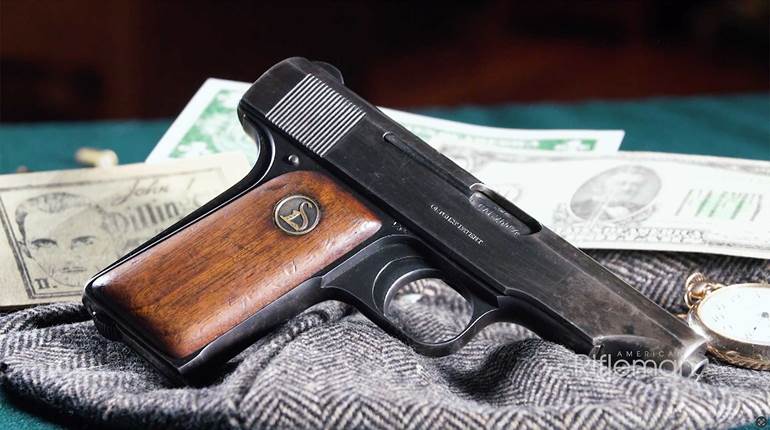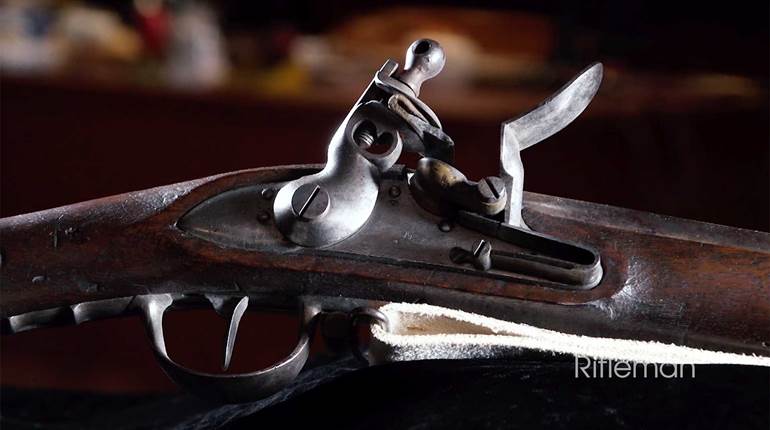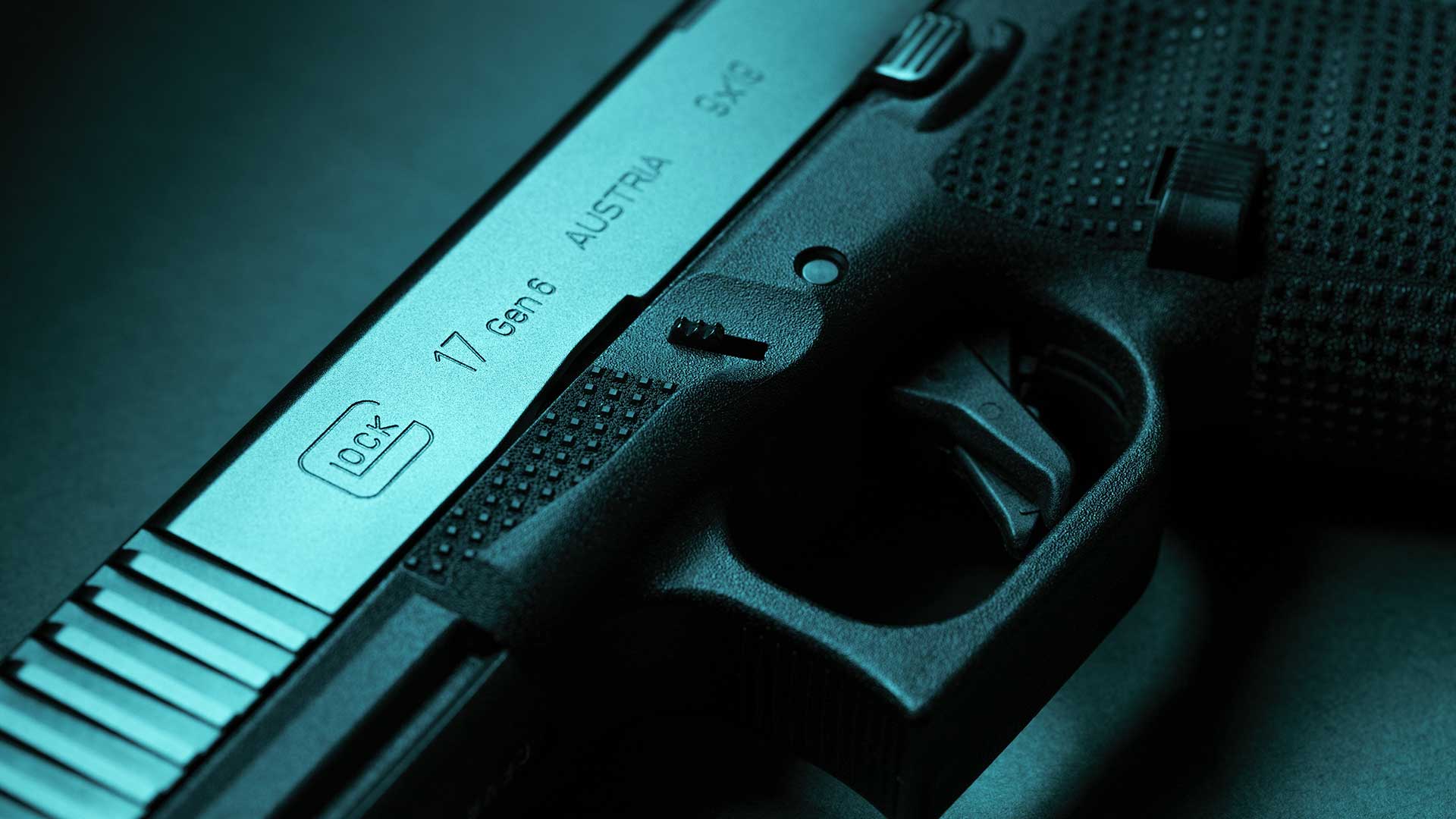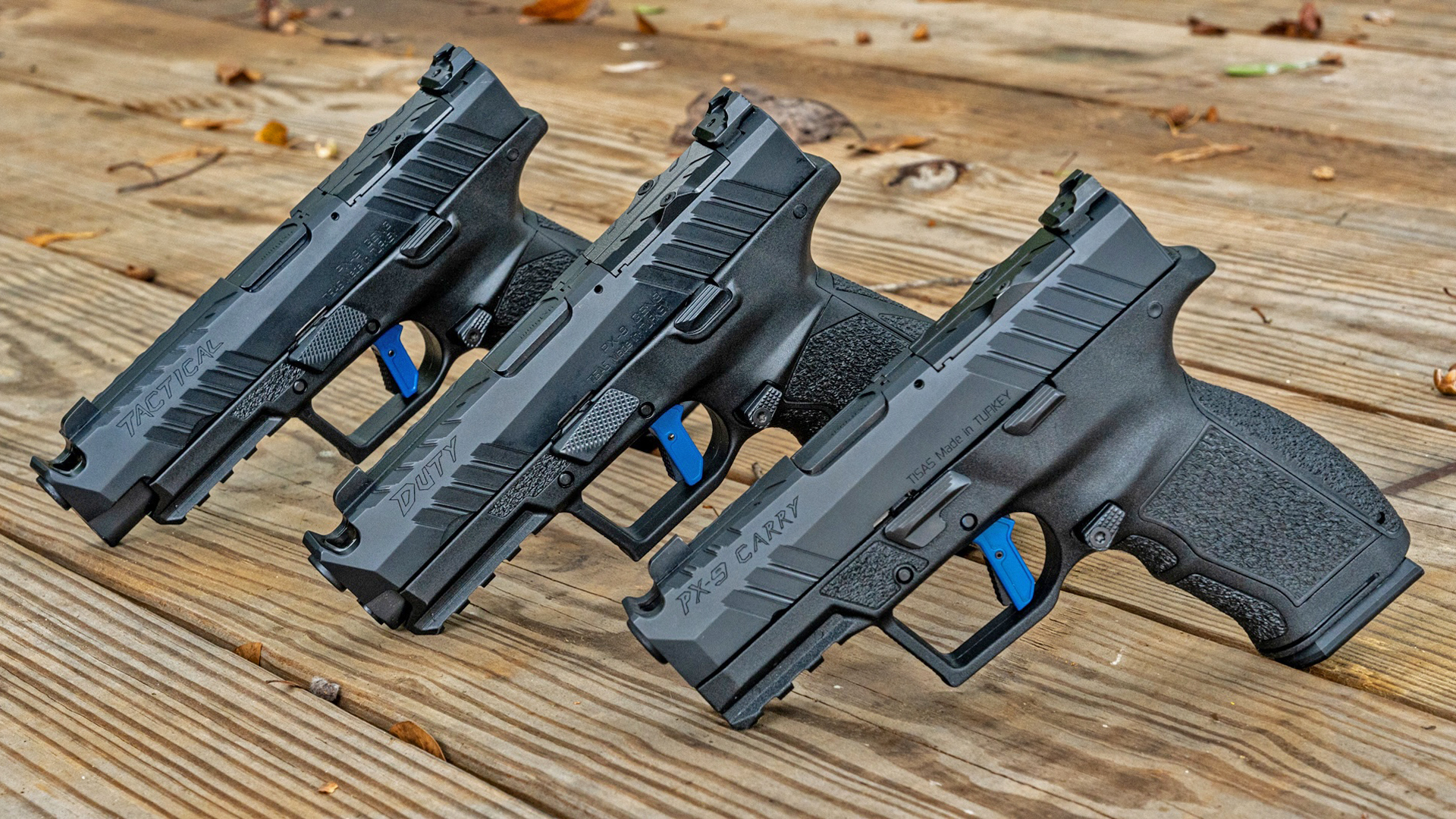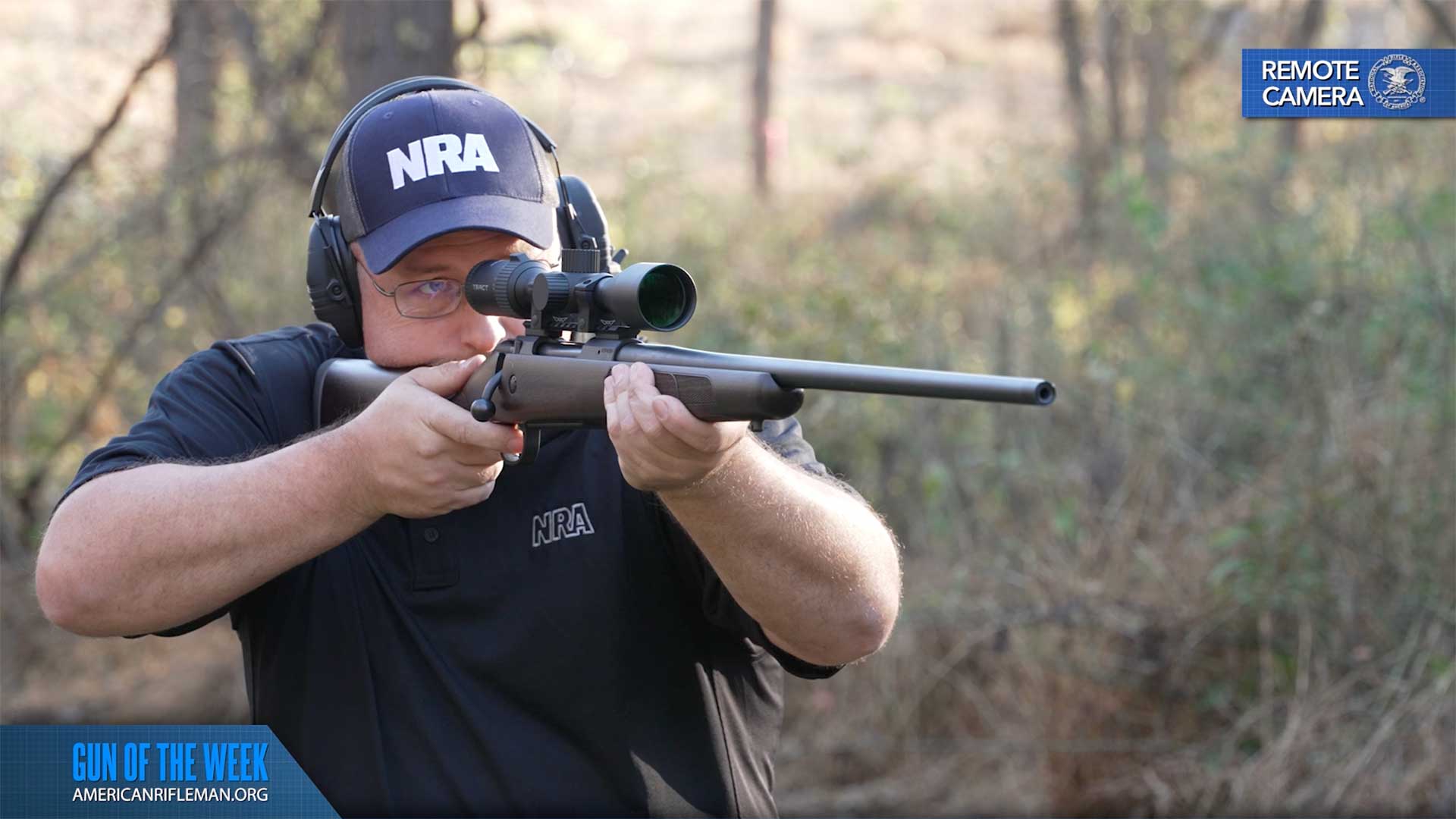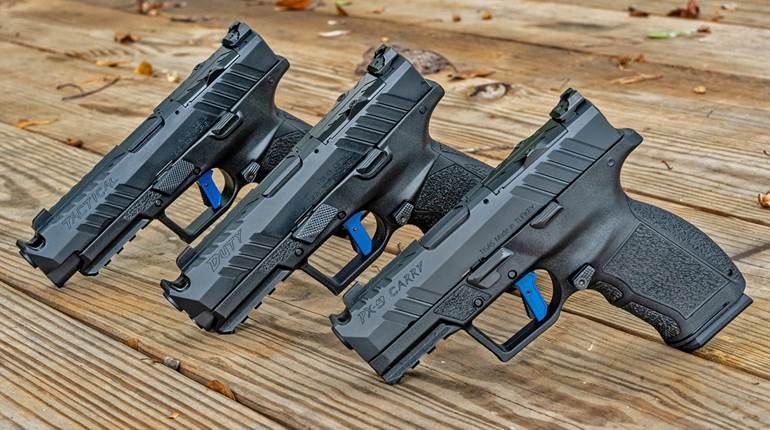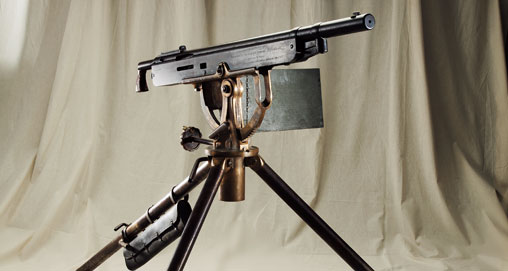
2/27/2013
This past summer, I travelled to New England and New York to secure photos and information in preparation for the National Firearms Museum’s new exhibit “Theodore Roosevelt: Trappings of an Icon”, in which the National Park Service generously loaned the NFM more than 100 artifacts from Theodore Roosevelt’s family home, Sagamore Hill on Long Island’s Oyster Bay.
I had been invited to visit with Terry Brown, then the executive director of the Theodore Roosevelt Ass’n, at the Theodore Roosevelt Birthplace National Historic Site, at 28 East 20th St. in Manhattan. It was here, overlooking Gramercy Park, in 1858, that the future 26th President of the United States was born. Brown was excited to show me the “TR in ’12” exhibit located in the beautiful Manhattan brownstone. The display chronicled the Presidential campaign of 1912 when TR broke from the Republican Party and formed the Progressive Party, or “Bull Moose” party as it was popularly known.
Of particular note, Brown thought I would be interested in the Colt Police Positive .38 revolver John Schrank used on Oct. 14, 1912, to shoot TR in the chest shortly before he gave a speech in Milwaukee, Wis. Bleeding from the wound in his right side, TR stood before an audience of thousands and read from his bullet-riddled speech for 90 minutes before he would allow himself to be taken to a hospital. TR’s quote “It takes more than that to kill a Bull Moose” became a rallying cry for the rest of his ill-fated campaign. I was unaware of the Colt and was excited to see that it was on public display. I immediately began efforts with Brown to secure its loan to the NFM at the conclusion of the exhibit. (Alas, that was not to be).
On the way out of the basement exhibit area I glanced around the room and spied a familiar tripod-mounted gun half hidden in a dark corner. With only a small black-and-white photograph mounted to the wall to illustrate its significance, I was surprised to see a Colt Browning Automatic Gun Model of 1895 (Commonly referred to as a “potato digger” for the motion of its operating piston). Brown asked, “What do you think of the Gatling Gun!” With wild enthusiasm, I replied, “Could it possibly be one of the Rough Rider ‘potato diggers?’”
I took a small SureFire flashlight out of my camera bag to illuminate the receiver so I could see what was written on it. My hands shook nervously as the light brought the words into view.
Presented to the 1st U.S.V. Cavalry [Rough Riders]
by L. and S. Kane
las guasimas june 24th, san juan july 1, santiago [siege of]
1898
Here was one of the two potato diggers that were in Cuba with TR and the Rough Riders. Brown and NPS Ranger Michael Amato could see that I was suddenly unnerved. They both moved in closer to see the inscription. On the top of the gun was the serial number, 161. This was most definitely the gun I had read so much about.
Brown assumed I knew about the four Gatlings supporting the Rough Riders at San Juan Hill. We have one of the four on display in the current exhibit courtesy of the recent Robert E. Petersen gift. I also knew where two of the other three were located and had even fired one of them in Kansas a few years ago with Jim Supica the director of the NFM. But this was not a Gatling; it was a potato digger and, as TR wrote in The Rough Riders (1899): “Our regiment had accumulated two rapid-fire Colt automatic guns, the gift of Stevens, Kane, Tiffany, and one or two others of the New York men … .” Most writers have since just referred to the Model 1895’s as “the Tiffany guns” supposing that the Tiffany mentioned by Roosevelt was Louis Comfort Tiffany, whose Oyster Bay estate, Laurel Hollow, was close to TR’s Sagamore Hill. They have also, mistakenly, referred to Louis Comfort Tiffany’s son William Tiffany, a trooper in the 1st U.S.V.
William Tiffany was actually the son of Newport, R.I., scions George and Isabella Tiffany, who donated one of the two guns to the regiment. He was promoted to sergeant commanding the two Colt-Browning machine gun section and was later promoted to lieutenant following his actions on July 1, 1898.
Aside from Roosevelt’s mention of the guns in his book, and few sparse mentions in other contemporary accounts, there is little modern scholarship on the subject available. I know of no published photographs of either gun made after July 1898. Their whereabouts have been unknown to the general public until the Kane gun went on display at the NFM in October 2012. I had been to the Theodore Roosevelt Birthplace Site a number of times and would have certainly noticed this iconic firearm if it had been previously on display.
Some may ask, why all the fuss, what is so special about a seemingly lost potato digger? This was the very first automatic machine gun ever used by the U.S. Army in combat. This was the gun that ushered in the dawn of a new century and changed the face of military combat for the next 100 years—the U.S. Army’s first “big stick.”
Dolf Goldsmith’s The Browning Machine Gun, Volume I states that the Rough Riders’ Colt Model 1895, serial numbers 161 and 164, were delivered to the American Ordnance Co. of New York, N.Y., on May 12, 1898, and they were chambered in 7x57 mm Mauser. Tiffany’s section of 16 men took 4,000 rounds of ammunition with them to Cuba.
Remember The Maine!
After the sinking of the U.S.S. Maine in Havana harbor on Feb. 15, 1898, the United States declared war on the Spanish empire. Theodore Roosevelt, then assistant secretary of the Navy in President William McKinley’s cabinet, resigned his post to raise the 1st United States Volunteer Cavalry, soon to become known as “Roosevelt’s Rough Riders.” Men were selected from the polo fields of Harvard, Princeton and Yale, and they were accompanied by cowboys, bronco busters, sheriffs and a few Indians from the western frontier. Together they formed one of the most unique and diverse units in American military history. They gathered at the State Fairgrounds in San Antonio, Texas, to train for combat, receive horses and their military equipment. Ever the firearm enthusiast, TR made sure, through his connections in the War Department, that his men were armed with the newest Model 1896 Krag Jorgensen magazine-fed, smokeless powder rifles in .30 Gov’t (.30-40 Krag). After a month of training they were sent to Tampa, Fla., and then embarked for Cuba.
On June 22, the Rough Riders landed in Cuba and began to march inland. Their first fight occurred on June 24 at Las Guasimas. It wasn’t the Model 1895’s first combat use as on June 14, the U.S. Marine Corps’ First Battalion, C Company, used four .236 USN Model 1895 Colts taken from the U.S.S. Texas, at the battle of Cuzco Wells near Guantánamo Bay.
On July 1, the Rough Riders made their historic charge up Kettle and San Juan Hills. TR would call this his “crowded hour,” an event that in 2001 would finally earn him the Medal of Honor for his leadership that day. Though little is mentioned of the unit’s two Colt Model 1895s, TR makes reference to the Gatling Gun Battery that had been formed by Lt. John Parker of the 13th Infantry. Back in Tampa, Parker had managed to secure four new Colt 1895 Gatling guns, serial numbers 1040, 1041, 1042 and 1043 from Gen. Shafter’s Chief of Ordnance, Maj. John T. Thompson (yes, that Thompson). Parker found his unique unit attached to the cavalry division and supported its advance up San Juan Hill. Once up Kettle Hill, the Rough Riders turned their attention to storming the heights of San Juan Hill. Soon an ominous noise rose from the field of battle. TR wrote: “One or two of the men cried out, ‘The Spanish machine guns!’ but, after listening a moment, I leaped to my feet and called, ‘It’s the Gatlings men! It’s our Gatlings!’ Immediately the troopers began to cheer lustily, for the sound was most inspiring.”
TR added: “From thence on, Parker’s Gatlings were our inseparable companions throughout the siege. They were right up at the front. When we dug our trenches, he took off the wheels of his guns and put them in the trenches. His men and ours slept in the same bomb-proofs and shared with one another whenever either side got a supply of beans or coffee and sugar. At no hour of the day or night was Parker anywhere but where we wished him to be, in the event of an attack.”
The most detailed accounts of Tiffany’s gun crews come from Parker in his book The Gatlings at Santiago (1898): “On the morning of the 2d of July a handsome young soldier, in the uniform of a Rough Rider, approached the battery commander, saluted, and said, ‘Col. Roosevelt directs me to report to you with my two guns.’ Inquiry elicited the fact that the young trooper was Serg. William Tiffany, that he had command of two Colt’s automatic rapid-fire guns, with a crew consisting of Corp. Stevens and six men, and that he had 4,000 rounds of 7-millimeter ammunition. Four thousand was not a very large supply for two guns which could fire at the rate of 500 shots each per minute. Fortunately, the Gatling Gun Detachment had found time, on the 1st of July, to collect about 10,000 rounds of Mauser ammunition in the captured trenches, and a comparison of the Mauser with the 7-millimeter ammunition at once disclosed the fact that it was precisely the same ammunition which Tiffany had brought along for his guns. The problem of ammunition supply for Tiffany’s guns was solved. He now had 14,000 rounds, and his guns became a very powerful reinforcement at this point. Serg. Tiffany and his men had carried these guns from Siboney to the firing-line upon their backs. How they got the four boxes of ammunition through they themselves could hardly tell.”
Roosevelt clears up the issue by writing: “Tiffany, by great exertions, had corralled a couple of mules and was using them to transport the Colt automatic guns in the rear of the regiment.”
Of the effectiveness of the combined Gatling and Colt Model 1895 battery, TR wrote that the dynamite gun that was also attached to the unit made good work of busting up Spanish fortifications, when it actually worked. A dynamite gun round, Roosevelt related, “… struck a big building, from which there promptly swarmed both Spanish cavalry and infantry, on whom the Colt automatic guns played with good effect during the minute that elapsed before they could get other cover. These Colt automatic guns were not, on the whole, very successful. The gun detail was under the charge of Sergeant (afterward Lieutenant) Tiffany, assisted by some of our best men, like Stephens, Crowninshield, Bradley, Smith, and Herrig. The guns were mounted on tripods. They were too heavy for men to carry any distance and we could not always get mules. They would have been more effective if mounted on wheels, as the Gatlings were. Moreover, they proved more delicate than the Gatlings, and very readily got out of order. A further and serious disadvantage was that they did not use the Krag ammunition, as the Gatlings did, but the Mauser ammunition. The Spanish cartridges which we captured came in quite handily for this reason. Parker took the same fatherly interest in these two Colts that he did in the dynamite gun, and finally I put all three and their men under his immediate care, so that he had a battery of seven guns.”
Despite their shortcomings, TR did find them to be useful during the two-week siege of Santiago that followed the July 1 charge up San Juan Hill. He wrote of the Spanish sharpshooters harassing their lines with effective suppressing fire:“[O]ccasionally we would play a Gatling or a Colt all through the top of a suspicious tree, I but twice saw Spaniards brought down out of their perches from in front of our lines—on each occasion the fall of the Spaniard being hailed with loud cheers by our men.”
As far as active engagement during the siege, TR wrote: “Almost the only Rough Riders who had a chance to do much firing were the men with the Colt automatic guns … Parker had a splendid time with the Gatlings and the Colts. With these machine guns he completely silenced the battery in front of us.”
Parker had high praise for Sgt. Tiffany and his men during the siege. His book is complete with detailed maps marking the exact position of each of the two Colt Model 1895s as well as his own Gatlings. Once in the trenches he wrote: “[Tiffany] and his men now succeeded in placing his guns in the trench, and, from that time until the end of the fight, they could hardly be induced to leave them long enough to eat; they didn’t leave them to sleep—they slept in the trench by the guns.”
On July 17 Santiago finally surrendered and the work of the Rough Riders was finished in Cuba. Sadly, they remained in their entrenchments for another month before they were shipped home to Camp Wikoff on Montauk Point, the eastern edge of Long Island. During the month of inactivity, many men of the regiment came down with “Cuban Fever.” Nineteen would perish, almost as many died from malaria as from Spanish bullets. On August 25, while recovering in Boston, Lt. William Tiffany died and was deeply mourned by Roosevelt and the rest of the regiment still quarantined on Long Island.
With Tiffany’s death and the disbandment of the 1st U.S.V. Cavalry on Sept. 15th, 1898, all mentions of the two Model 1895s disappear. The discovery of serial number 161 in July of last year has sparked renewed interest in the historic use of these two machine guns. The most interesting developments have come from the clues the gun itself has left us. The inscription “L. & S. Kane” led to more research. Roosevelt noted the two guns were gifts to the regiment from: “Stevens, Kane, Tiffany, and one or two others … .” William Tiffany was made sergeant of the machine gun detachment, Joseph S. Stevens was made a corporal. This leaves Kane, who was Captain Woodbury Kane of K Troop. In the photograph of the two Colt 1895s taken at the San Antonio fair grounds in late May 1898, Tiffany and Stevens are identified in the group photo. One mustachioed gentleman on the far right is unidentified but is certainly Capt. Woodbury Kane. Kane was a friend of TR while he was at Harvard, was one of the country’s foremost polo players (as was Stevens) as well as an accomplished sailor, having crewed the America’s Cup entry to victory on more than one occasion. As the great-grandson of John Jacob Astor, he was a man of privilege and wealth. He was also adored by his two doting older sisters, Louisa Langdon Kane and Sybil Kent Kane. The first machine gun ever used in military combat by the U.S. Army was a gift from two women who adored their younger brother and presented his unit with the finest in military firepower available at the time.
TR’s original birthplace site was demolished prior to World War I. After his death, The Roosevelt Memorial Ass’n (as it was then known) rebuilt and restored the brownstone as homage to the late, venerated colonel of the Rough Riders. The home was transferred as a gift to the American people by the renamed Theodore Roosevelt Ass’n, along with Sagamore Hill, to the U.S. National Park Service in 1962. The NPS records reveal that the Colt Model 1895 was in the inventory of the home upon its acquisition in 1962. When the TRA acquired the gun and from where is unknown, and the location of the other “Tiffany” gun (number 164) is still a mystery.
The National Park Service has generously loaned the Colt Model 1895, number 161, to the NFM to include it in the popular “Theodore Roosevelt: Trappings of an Icon” exhibit. The gun will be on view through September 2013. “Trappings of an Icon” will continue on display indefinitely. The NFM is located at NRA Headquarters in Fairfax, Va. Admission is free and the museum is open to the public every day except Christmas from 9:30 to 5:00.














